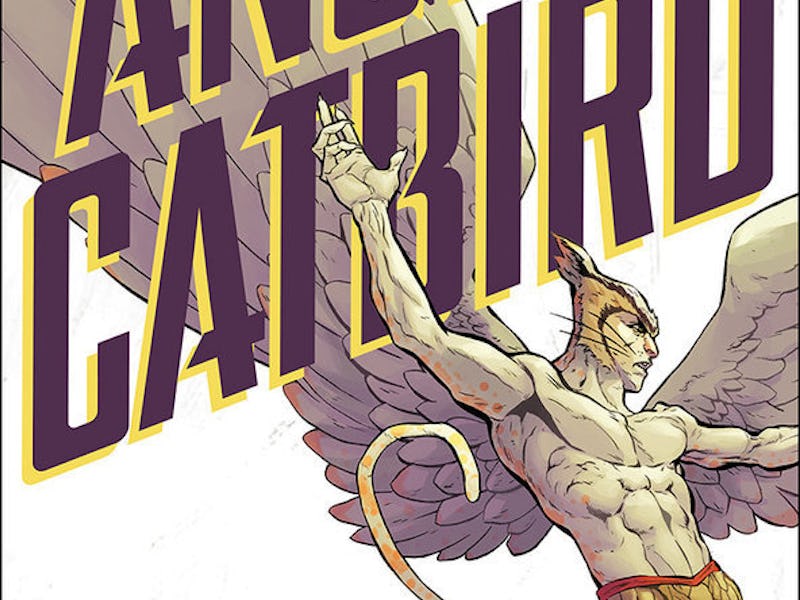Margaret Atwood's 'Angel Catbird' Announcement Is Not a Great Sign
Lifelong fans of Atwood's introspective speculative fiction wonder why the author insists on reaching beyond her genre.

It’s been a rough few years for fans of Margaret Atwood’s signature feminist writing, which at its best — Handmaid’s Tale, Negotiating with the Dead, Cat’s Eye, Oryx and Crake — has shed light on the deepest recesses of the psyches of women, artists, and other oppressed characters. Some of Atwood’s most dangerous work has attempted to unravel the mind of classically ignored characters: the underachieving Jimmy and the near-psychotic genius Crake.
Her most powerful novels whispered their theses through quiet scenes of determination, wherein Atwood’s heroines struggled with their inner desires to comply. For decades, the Canadian author has been a cornerstone voice in speculative literature and “social science fiction”, assuring critics with a wink that she wasn’t quite a “sci fi” author. She even criticized writers of hard science fiction in the press, calling their books “squids talking in space”.
When Atwood began cashing in on the genre she apparently despised, her writing suffered. The trouble began with Atwood’s first direct sequel, The Year of the Flood, which retold some of the events from Oryx and Crake from the point of view of different characters. The New York Times called The Year of the Flood a “brilliant retelling”, but much of its review was devoted to recapping the genius of Atwood’s earlier novels. The AV Club noted that, “from a sheer narrative perspective, Atwood’s new novel has little reason to exist”, though it conceded that the book was effective and enjoyable. Critics, overall, seemed impressed with what Atwood had pulled off: an engrossing sequel which no one had asked for.
Atwood gives us a very literary defense for selling out in MaddAddam, the third and final installment in her trilogy, “There’s the story,” she says, “then there’s the real story, then there’s the story of how the story came to be told. Then there’s what you leave out of the story. Which is part of the story too.” Though Theo Tait of The Guardian did admit he enjoyed all three novels, he added in his review of MaddAddam that “they do present an eccentric spectacle – of a fierce, learned intelligence, throwing out references to Robinson Crusoe, Blake, and especially Milton, while writing what is essentially an epic B-movie.” He admired Atwood’s effectiveness, but called her efforts neither “new nor subtle.”
Subtlety was Atwood’s calling card during the first four decades of her career. Most of the large plot devices in her earlier novels, which are now regarded as classics, revolve around the secrets women keep from their husbands, and female murderers. Back in the 70s, Atwood allowed the drama of her novels to occur in flashbacks, in dream sequences and in shadowy, overheard conversations. Her complicated relationship with genre work, first insulting it, then making up her own personal genre terms to avoid categorization — she insists she’s not a feminist writer, nor a science fiction author to this day — has informed her seemingly erratic project choices in the last few years.
The Penelopiad, Atwood’s retelling of The Odyssey from Penelope’s point of view, was published in 2005 and sold without inspiring many reviews. Atwood began adding multimedia aspects to this book tour, including choral performances, which some critics believed were an attempt to make her novels social-media friendly. Atwood joined Twitter in 2009, quickly becoming one of the industry’s most prolific, and responsive, users. In 2013, Lorraine York wrote Margaret Atwood and the Labour of Literary Celebrity, noting that Atwood’s narrative voice, and public persona had changed drastically under the limelight since the 1970s. According to York, Atwood began calling her promotional tour “unprecedented, and unrepeatable,” which, as York pointed out, was not true. Cross-marketing has always been a tactic used by book publishers, especially those working in Atwood’s maligned genre, science fiction. 2015’s The Heart Goes Last was critically condemned for being sloppy and confusing.
This year, Atwood donated her newest novel to The Future Library, guaranteeing no one would read it for a century, until the Library time capsule allows access to her book. And, of course, in late 2015, Dark Horse Comics announced that it would be publishing Atwood’s foray into graphic novels, arguably the most tantalizing genre for contemporary authors.
All of these flashy career developments, focused on promotional efforts and using technology and social media, don’t exactly signify a zen Atwood poised to release one of her classically subdued works. It’s difficult to accept the news of Angel Catbird’s ridiculous title and cover art alone. Will Atwood deliver a graphic novel worthy of her earlier works? It depends on whether she respects, or shirks, yet another genre. Graphic novels, like science fiction, have produced some of the most astounding works of art in the last decade. Atwood already alienated a large swathe of her readership by insisting her books were more nuanced and more realistic than the work of authors like Ursula K Le Guin and Octavia Butler. Will she work to place Angel Catbird in the already teeming canon of literary graphic work, or will she generalize about this genre, too?